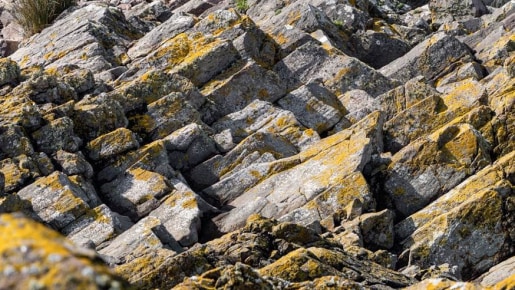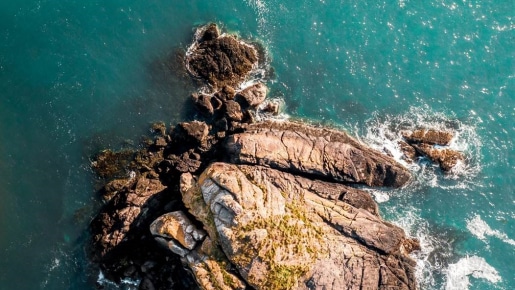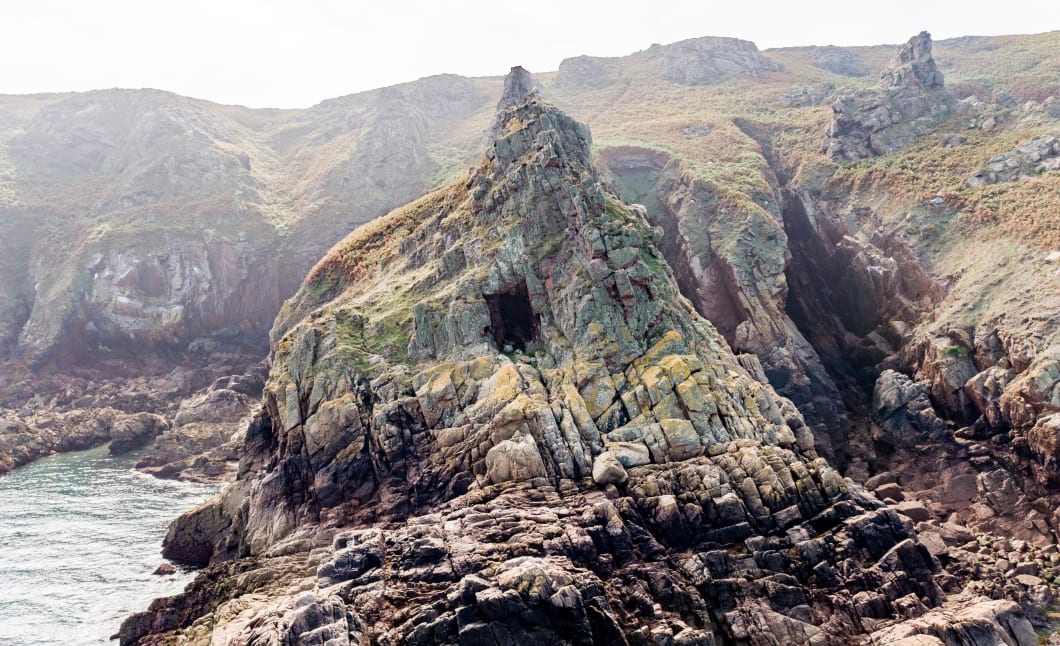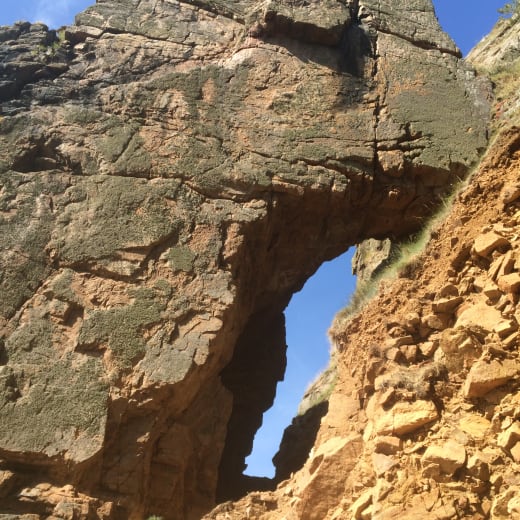
Volcanic activity is the origin of many of the rocks that you will find under your feet today. Millions of years ago, Jersey’s volcanic origins took place long before fish swam in the sea and dinosaurs roamed the Earth
This is Jersey’s version of the Giants’ Causeway where, around 530 million years ago, lava flowing from a volcano cooled quickly, forming a rock called rhyolite. As the rhyolite cooled it split into hundreds of distinctive hexagonal columns (bit like the pattern made by mud drying beside a pond). In Jersey the columns in ‘the causeway’ are lying at an angle of about 30 degrees whereas in the Giants’ Causeway they are vertical. Nonetheless, they are distinctive and may be seen on the beach or from the roadside at La Crête.

Rhyolite at Anne Port
The rock in the photo is named L’Étacquerel (the adjacent fort is named after it) and it is made of Bouley Bay Ignimbrite which was produced by explosive volcanic eruptions around 530 million years ago. These eruptions produced layers of superheated ash and debris that tumbled, in the form a pyroclastic flow, down the side of the volcano to accumulate in deep layers that later cooled into solid rock

Tête des Hougues made of made of Bouley Bay Ignimbrite
This rock is made of diorite which, about 540 million years ago, was a large pool of liquid magma deep below the Earth’s surface. As the liquid diorite was cooling and turning into rock, it became mixed with a different sort of magma (granite) which created a complex network of lighter coloured veins visible in many rocks around Green Island.

Green Island rockface of diorite and granite












